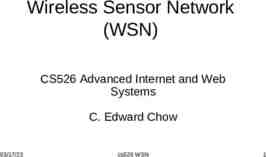Training
22 Slides218.00 KB

Training

Training & Development Definition “The systematic acquisition of attitudes, concepts, knowledge, roles, or skills, that result in improved performance at work.” Training skill enhancement processes for non-managerial jobs Development skill enhancement processes for managerial jobs

Topics Who needs what kind of training? Needs analysis Learning objectives Learning environment How should training be delivered? Instructional techniques Was training effective? Measuring criteria Experimental design (interpreting results) Training validity

The Classic Training System Needs assessment Organizational analysis Task/ KSA analysis Person analysis Development of criteria Training objectives Training Validity Transfer Validity Selection & design of training program Intraorganizational Validity Training Use of evaluation models Interorganizational Validity

Training Needs Assessment Organizational Analysis Examines systemwide factors that effect the transfer of newly acquired skills to the workplace Person Analysis Who needs what kind of training Task Analysis Provides statements of the activities and work operations performed on the job

Training Objectives Formal description of what trainee should be able to do after training Objectives Convey training goals Provide a framework to develop course content Provide a basis for assessing training achievement Characteristics of effective objectives Statement of desired capability or behavior Specify conditions under which behavior will be performed State the criterion of acceptable performance

Considerations in Training Design Designing a learning environment Learning principles Trainee characteristics Instructional techniques

Phases of Skill Acquisition Procedural Knowledge Knowledge Compilation Acquiring Declarative Knowledge Back

Important Trainee Characteristics Trainee readiness Trainability tests Have prospective trainees perform a sample of tasks that reflect KSAs needed for job Trainee motivation Arousal, persistence, and direction Factors related to high motivation Self-efficacy Locus of Control Commitment to Career Back

Instructional Techniques Traditional Approaches Classroom Instruction Lecture and Discussion Case Study Role Playing Self-Directed Learning Readings, Workbooks, Correspondence Courses Programmed Instruction Simulated/Real Work Settings Vestibule training Apprentice training On-the-job training Job Rotation/Cross Training

New Training Technologies Distance Learning CD-Rom and Interactive Multimedia Web-based Instruction Intelligent Tutoring Systems Virtual Reality Training

Kirkpatrick’s Evaluation Criteria Level 1 – Reaction Did trainees like the training and feel it was useful Level 2 – Learning Did trainees learn material stated in the objectives Level 3 – Behavioral Are trainees using what was learned back on the job Level 4 – Results Are benefits greater than costs

Assessing Training Outcomes Goal is to identify training as “cause” of changes in on-the-job behavior or organizational results. Experimental designs help researchers to link training to results There are a number of reasons (threats) why it is difficult to determine impact of training on results The Wisdom Pill

Experimental Design Controlling potential confounds Goal of experiment is to “rule out” alternate explanations of what affected dependent variable Confounds are threats to internal validity Can be controlled through appropriate experimental design and procedures

Internal Validity Confounds Controlled by Experimental Design 1. History 2. Maturation 3. Testing 4. Instrumentation 5. Statistical Regression 6. Selection 7. Mortality 8. Selection-Maturation Confounds NOT controlled by Experimental Design 1. Diffusion of Treatment 2. Compensatory Equalization 3. Compensatory Rivalry

Pre-experimental Designs Post with no Control Group Training Disadvantages Controls none of the threats to internal or external validity Basically worthless Posttest Advantages Can potentially provide information for speculation about training effectiveness

Pre-experimental Designs Pre – Post with no Control Group Pretest Training Cannot rule out any threats to internal or external validity Except possibly mortality Posttest Advantages Can determine if change occurred May be able to understand mortality

Experimental Designs Posttest-Only Control Group Design Experimental Training Posttest Group Differences Random Assignment Control Posttest

Experimental Designs Pre – Post with Control Group Pretest Experimental Training Group Differences Pretest Posttest Group Differences Control Posttest

Experimental Designs Solomon Four Group Design Group 1 Pretest Training Posttest Group 2 Pretest No Training Posttest Group 3 Training Posttest Group 4 No Training Posttest

Assessing Training Program “Validity” Training Validity Transfer Validity Intraorganizational Validity Interorganizational Validity

Key Dates for Group Project April 30th –Training Objectives Due May 12th – Evaluation Materials Due May 14th and 19th – Training Delivered June 9th – Group Report Due






